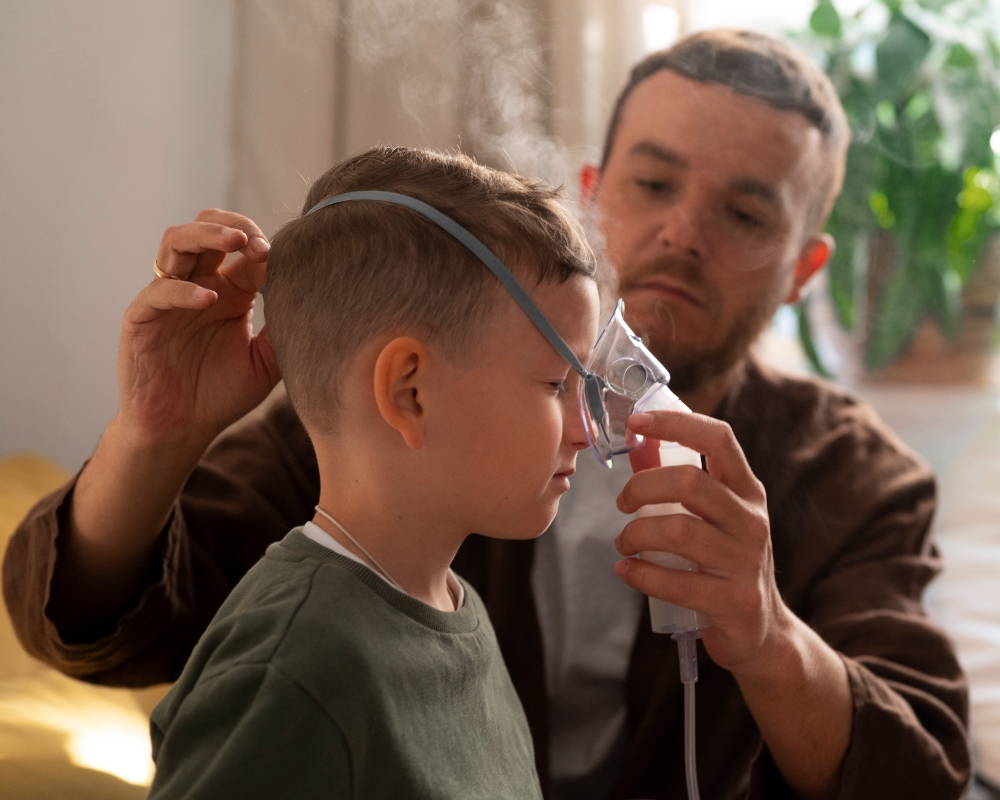Evidence-Based Management of Pediatric Lung Disease

There are a variety of respiratory conditions affecting children worldwide. Pediatric lung disease is the most notable out of all them. These can be common ailments like asthma to rarer disorders such as cystic fibrosis. To address these diverse conditions, a well-grounded, evidence-based approach is needed. Each treatment regimen is carefully aligned with the distinct and delicate needs of young patients.
Over recent years, advancements in medical research have ushered in a wave of innovative management strategies. These developments have improved the therapeutic outcomes of lung conditions in younger patients. Parents and medical practitioners now have more tools to manage the disease. This is to significantly lessen the long-term impacts of these diseases on children’s health.
Furthermore, marked improvements in both quality of life and long-term prognosis requires an evidence-based approach. This sees to it that treatments are both effective and personalized to the unique needs. Recent advancements in medical research have led to innovative management strategies, significantly improving outcomes for children with these diseases.
Understanding Pediatric Lung Diseases
Pediatric lung conditions have different types from acute to chronic ailments. Each presents its own set of challenges. Also, asthma stands out as a common chronic condition among children. It is marked by recurring symptoms such as wheezing, breathlessness, and persistent coughing. In contrast, cystic fibrosis is a genetic disorder with persistent lung infections. It is known to progressively impair respiratory function.
Moreover, to devise effective management strategies, it's important to have an understanding of the root causes of these diseases. Recognizing the distinction between conditions is key to tailoring treatments that address both immediate and long-term symptoms.
Importance of Early Diagnosis
Early diagnosis is fundamentally critical in managing pediatric lung conditions. It serves as a foundation for preventing disease advancement. Timely recognition of symptoms, coupled with swift medical intervention, halts further progression. This helps in improving the patient's day-to-day function.
Healthcare professionals utilize a variety of diagnostic instruments. This includes pulmonary function tests, chest X-rays, and genetic testing. Also, the importance of early action is particularly pronounced in conditions such as cystic fibrosis. This is where initiating treatment promptly can considerably slow down deterioration.
This approach in the early stages of the disease is key to optimizing health outcomes. It helps in managing long-term implications effectively.
Evidence-Based Treatment Approaches
Asthma Management
The field of asthma management has progressed significantly. It’s been propelled by evidence-based guidelines that advocate for a dual approach of medication and lifestyle modifications. Core to the regimen are inhaled corticosteroids. These reduce the inflammation and counter asthma episodes.
For more challenging cases, leukotriene modifiers and long-acting beta-agonists are frequently utilized. The purpose of these is to improve control over symptoms. Equally important are patient’s education, caregivers on preventing triggers and mastering inhaler techniques. This sees to it that treatments are as effective as possible.
Cystic Fibrosis Care
Addressing cystic fibrosis requires a comprehensive and multidisciplinary method. Important components of this approach include clearing the airways. In addition to this, nutritional support, and innovative medications like CFTR modulators target the genetic roots of the disorder.
Furthermore, continuous evaluation and adaptation of the treatment regimen, informed by the latest research findings, are vital. The purpose is to provide the highest standard of care. This thorough, responsive strategy aims to manage symptoms effectively. It helps in improving health outcomes of patients.
Role of Multidisciplinary Teams
The management of pediatric lung conditions typically demand coordinated expertise from a multidisciplinary team. This team commonly includes pulmonologists, respiratory therapists, nutritionists, and physical therapists.
Such a holistic approach tackles the direct respiratory challenges of the disease. It also carefully considers the nutritional and psychosocial needs that significantly impact a child's health.
In addition to this, regular follow-up visits and care strategies are central to this process. This makes sure that each aspect of the child’s health is meticulously addressed. Through continual monitoring and adaptive care plans, this comprehensive method aims to optimize the outcomes.
The Future of Pediatric Lung Disease Management
Advancements in genetic research and the thriving field of biotechnology are propelling us toward a new era. This has led us to the management of pediatric lung conditions. Important in this paradigm shift are gene therapy and personalized medicine—innovative domains that promise to revolutionize how we approach treatment.
These emergent fields are created to address the unique genetic make-up of each patient. It facilitates interventions that are not only more targeted but also significantly more effective.
As we delve further into research and push forward with clinical trials, a cascade of fresh insights and promising therapies continue to surface. This progressive scientific frontier forms a wave of optimism.
Each discovery underscores a future where treatments are not just better, but are also more attuned to the young individuals’ needs. Potentially transforming their lives and health outcomes profoundly.
Key Takeaway
The management of pediatric lung disease is grounded in evidence-based practices. It is the key for enhancing the health and quality of life of these young patients. Healthcare providers who keep up with the latest research and adopt a multidisciplinary strategy can deliver optimal care.
As medical science progresses, there is considerable optimism for the development of innovative treatments. These are methods that promise to advance the management of these conditions further.
The integration of current, research-backed methods and staying updated with ongoing medical advancements are needed for an effective treatment plan. This holistic and informed approach boosts outcomes. Also, it sees to it that treatments are precisely personalized for each child. This is for better health and a brighter future for these young patients.
- Industry
- Art
- Causes
- Crafts
- Dance
- Drinks
- Film
- Fitness
- Food
- Games
- Gardening
- Health
- Home
- Literature
- Music
- Networking
- Other
- Party
- Religion
- Shopping
- Sports
- Theater
- Wellness
- News


